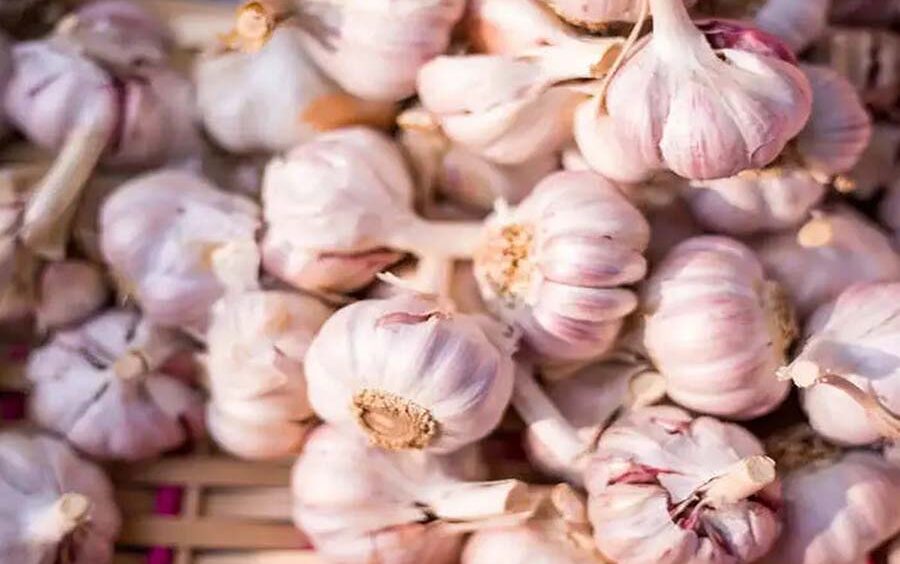Garlic: A Flavorful and Nutritious Essential

Garlic (Allium sativum), a member of the Allium family, is renowned for its culinary versatility and potent health benefits. Native to Central Asia and cultivated for millennia, garlic boasts distinctive white bulbs comprised of cloves enveloped in a papery skin, each clove imparting a unique flavor to dishes.
Nutritional Profile
Beyond its culinary allure, garlic packs a nutritional punch. A 1-ounce (28-gram) serving of garlic contains essential nutrients, including fiber, protein, vitamins C and B6, manganese, selenium, calcium, and iron. Moreover, garlic is rich in antioxidants, notably allicin, contributing to its health-promoting properties.
Health Benefits
Garlic has garnered attention for its array of health benefits, including:
Heart Health: Lowering blood pressure and cholesterol levels to reduce the risk of heart disease.
Antibacterial and Antiviral Properties: Combatting infections naturally.
Cancer Prevention: Potentially reducing the risk of certain cancers, such as stomach and colorectal cancer.
Anti-Inflammatory Effects: Aiding in managing inflammatory conditions like rheumatoid arthritis.
Immune Support: Boosting the immune system to fend off illnesses.
Culinary Applications
Garlic’s culinary versatility knows no bounds, with uses ranging from flavoring sauces and soups to sautéing vegetables and meat. It can be enjoyed fresh, minced, crushed, or roasted, adding depth and complexity to a myriad of dishes, including marinades, dressings, and spreads.
Types of Garlic
Garlic comes in various types, primarily categorized as hardneck and softneck garlic. Hardneck varieties, such as Rocambole and Purple Stripe, offer a robust flavor, while softneck varieties like Artichoke and Silverskin provide a milder taste.
Buying and Storing Garlic
When purchasing garlic, opt for firm, dry bulbs free from mold or sprouting shoots. Store garlic in a cool, dry place with adequate air circulation to maintain its freshness and flavor, avoiding refrigeration to prevent sprouting.
Precautions and Side Effects
While garlic offers numerous health benefits, it’s essential to consider potential side effects, including strong breath and body odor, digestive discomfort, and interactions with medications. Individuals with allergies or blood-thinning conditions should exercise caution when consuming garlic.
Frequently Asked Questions
Common Cold: While garlic may alleviate cold symptoms, it’s not a cure.
Daily Consumption: One to two cloves daily suffice for health benefits.
Pregnancy: Pregnant women should consult healthcare providers before increasing garlic intake.
Natural Antibiotic: While garlic possesses antibacterial properties, it’s not a substitute for prescribed antibiotics.
Minimizing Odor: Fresh parsley, mint, mouthwash, or dairy products can help mitigate garlic breath.
Garlic’s rich history, culinary versatility, and health-promoting properties make it a staple ingredient in kitchens worldwide. Embracing garlic as part of a balanced diet can elevate both the flavor of dishes and overall well-being, embodying its status as a culinary essential and botanical marvel.


 English
English 






























































































































































































































































































































































